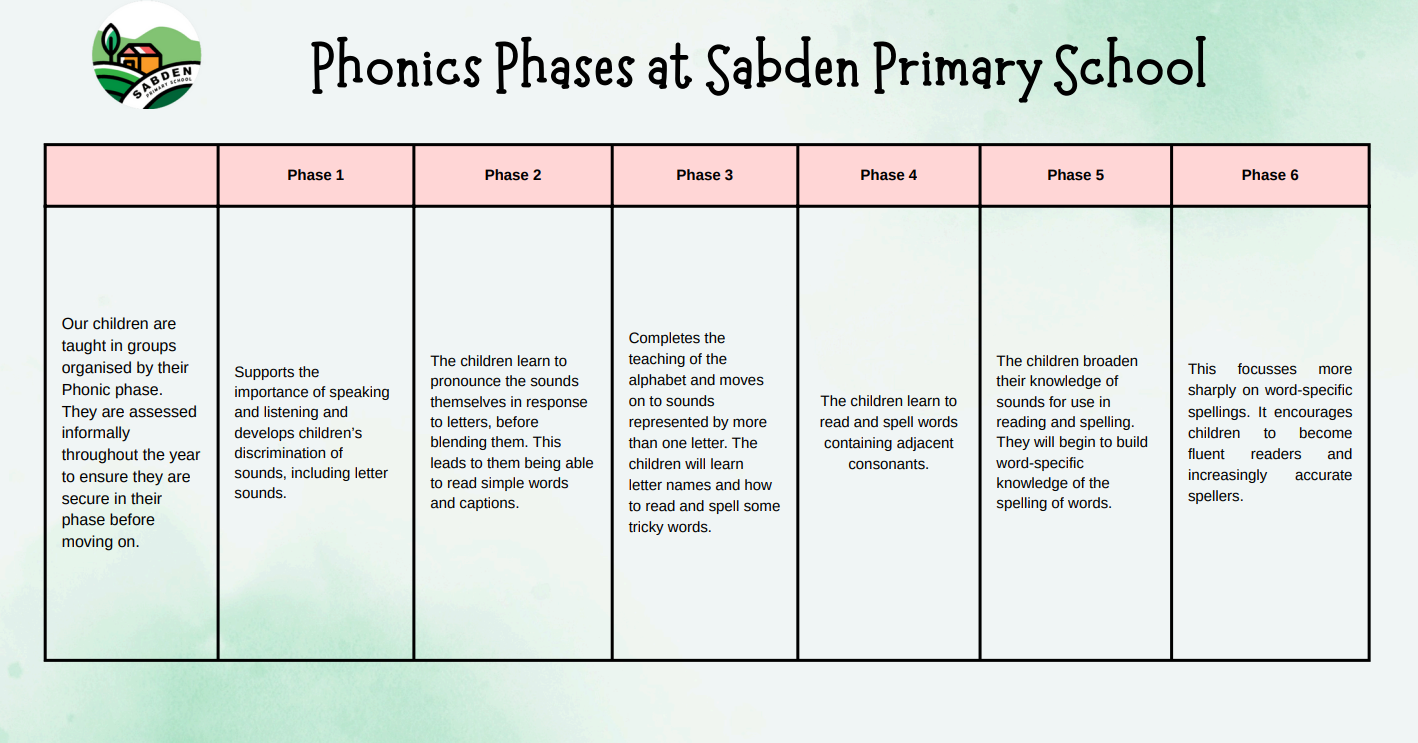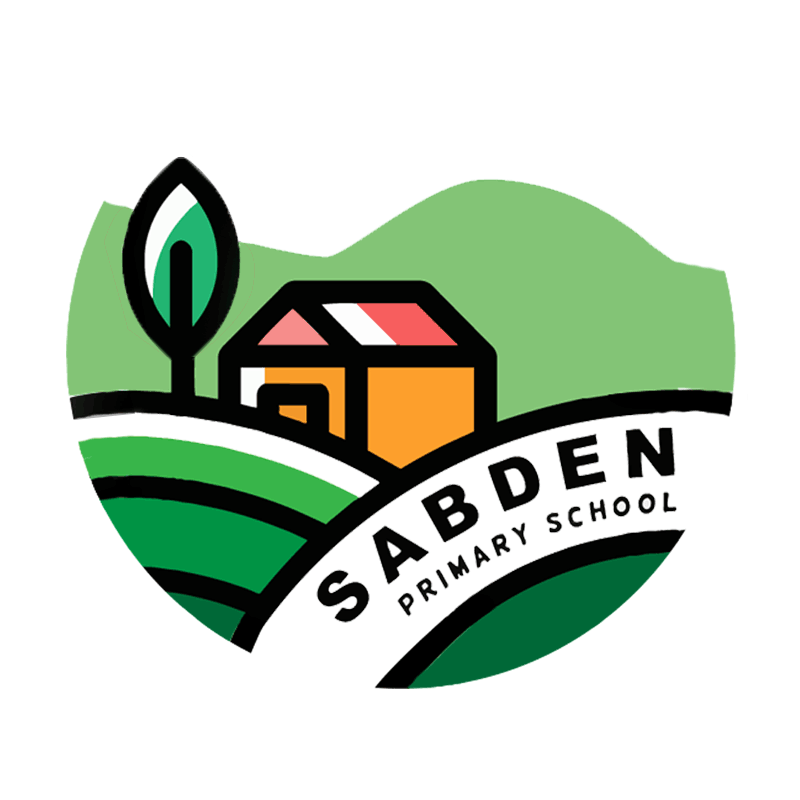Phonics
What does Phonics look like at Sabden?
At Sabden Primary School, phonics is taught daily to all children in Reception and Key Stage One. We follow the Red Rose Letters and Sounds systematic, synthetic phonics planning programme (Lancashire Professional Development Service) using the Letters and Sounds approach.
What is Phonics?
Phonics is a way of teaching children to read quickly and skilfully. They are taught how to:
- Recognise the sounds that individual letters make
- Identify the sounds that different combinations of letters make, such as 'sh' or 'oo'
- Blend these sounds together from left to right to make a word
Children can then use this knowledge to 'decode' new words that they hear or see. This is the first important step in learning to read.
The children are taught to read words by blending, which means pushing all the sounds together to make a word. The children are taught to spell words by segmenting, which means sounding out words and writing down the sounds they can hear.
By the end of Reception, children are expected to be secure in Phase Three. By the end of Year One, children are expected to be secure in Phase Five. When finishing Key Stage One, most children at Sabden Primary School should be secure in Phase Six. This phase moves away from learning sounds and focusses on spelling rules and patterns.
Why Phonics?
Research shows that when phonics is taught in a structured way, starting with the easiest sounds and progressing to the most complex, it is the most effective way of teaching young children to read. It is particularly helpful for children aged 5 to 7 years old. Almost all children who receive good teaching of phonics will learn the skills that they need to tackle new words. Children can go on to read any kind of text fluently and confidently, and read for enjoyment (Department for Education).
Phonics Phases

How do we implement Phonics at Sabden?
Teachers teach phonics using a detailed, proven step-by-step teaching plan, where children are first taught simple GPCs, to accurately blend taught sounds, to decode simple words containing taught graphemes and then to read books that are closely matched to their increasing knowledge of phonics and the common exception words.
Pupils are taught in small groups, across year groups, which reflect their performance in phonics assessments. We make sure that pupils read books that are closely matched to their increasing knowledge of phonics and ability to read ‘tricky words’; so they experience early reading success and gain confidence that they are readers.
Phonics teachers have all the resources needed to teach their phonics sessions, and they follow detailed lesson plans. This ensures the consistency of the teaching of phonics and early reading, in every lesson, irrespective of the teacher.
Teachers attend regular in-house CPD sessions, where they have the opportunity to learn about pedagogical changes, new resources and to observe and practice specific parts of the teaching process.
Regular assessment ensures that pupils are taught in suitable groups which match their phonic knowledge and reading level. Pupils making speedy progress move groups quickly. Those pupils making steady progress continue at an appropriate pace matched to their reading level. Those pupils making slower progress are usually taught in smaller groups and generally receive additional small group or one-to-one intervention.
